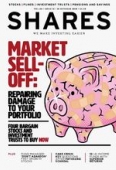Archived article
Please note that tax, investment, pension and ISA rules can change and the information and any views contained in this article may now be inaccurate.
Decoding bond proxies and explaining the risks you need to watch out for

Sometimes financial terms can seem intimidating to the uninitiated. Take bond proxies, for example.
There are several different definitions of this term, which has become increasingly popular in recent years, but essentially these are companies which are seen as ‘defensive’ thanks to a reliable earnings stream, predictable cash flow and strong and growing dividends.
As they offered a steady stream of income these stocks were seen as a substitute or ‘proxy’ for bonds which, after a three-decade bull run, offered very modest yields.
WHY BOND PROXIES BECAME POPULAR
The low interest rate environment in the wake of the financial crisis also saw the income from bond proxies attract more capital.
In addition, bond proxies have tended to outperform the market when investors had jitters about economic growth.
Morningstar Investment Management Europe portfolio manager Mark Preskett says bond proxies traditionally fall into one of four sectors, being consumer goods, utilities, telecommunications and healthcare.
He warns that bond proxies will not always be popular in difficult times as they still need to have strong fundamentals and remain resilient against rising interest rates and inflation.
While regulation is hitting utilities, consumer goods and telecommunication stocks, healthcare is benefitting from changes in regulation which are helping to drive through more drug approvals.
The healthcare sector has been the best performing sector year-to-date in the FTSE All-Share despite higher bond yields and interest rates, which have typically been bad for bond
proxy stocks.
IDENTIFYING DIFFERENT BOND PROXIES
Canaccord Genuity Wealth Management deputy chief investment officer Richard Champion says bond proxes fall into two main categories.
The first group of bond proxies are companies whose main characteristic is a stable source of income. These include property firms and utilities, including SSE (SSE) and British Gas owner Centrica (CNA).
Like Preskett, Champion warns utilities and telecommunication stocks such as Vodafone (VOD) and BT (BT.A) are facing regulatory pressures which may constrain their ability to dole out generous dividends.
According to Champion, the second type of bond proxy stocks include companies that may have no characteristics in common except a dependable earnings performance.
British American Tobacco (BATS) and Imperial Brands (IMB) fall into this group as earnings are derived by
selling cigarettes. Because these are addictive, historically at least revenue achieved by these companies has been consistent.
Consumer goods colossus Unilever (ULVR) benefits from a strong set of brands such as Ben & Jerry’s, Magnum and PG Tips.
These brands convey pricing power and mean the company is less at the mercy of fluctuations in the economy.
Champion argues businesses in the second category are high quality and more desirable than other bond proxies as they still offer growth, albeit often at a slower rate than the market.
One of the issues surrounding bond proxies is that investors generally mix these groups together.
UNFAIRLY LUMPED IN
This is problematic as the first set of companies are generally impacted more by rising interest rates, while the latter group can take advantage of strong brands to deliver compounding returns. As such perhaps it is unfair to characterise them as bond proxies at all.
In commentary written in 2017 Daniel Roberts, manager of Fidelity Global Dividend (B777808), gave the view, similar to Champion, that all secure dividend-paying stocks had been lumped in the same
bond proxy category.
Adding that if you ‘scratch only a little beneath the surface and it can be seen that these sectors and the companies operating within them have very different characteristics in terms of duration, growth and absolute level of dividend yield’.
Roberts says he has a preference for quality stocks which is ‘permanent not tactical’ explaining that: ‘History shows that fundamentally strong businesses with income-generating qualities tend to perform strongly over the longer-term.’
RISKS AFFECTING BOND PROXIES
Fidelity investment director Matthew Jennings says utilities are out of favour as the UK government is encouraging people to switch suppliers and enforcing price caps, while investors worry that the Labour Party could come into power.
Despite this, there are interesting opportunities with Jennings flagging
National Grid (NG.) thanks to its good dividend yield and fundamentals.
Another sector out of vogue is the tobacco industry, affecting British American Tobacco and Imperial Brands.
Investors have turned against the sector as rivals have stolen market share amid regulatory pressures, lower cigarette sales and the increased popularity
of vaping.
Even consumer colossus Unilever could be in for a tough time as concerns over valuation and future growth could weigh on performance according to Jennings.
Important information:
These articles are provided by Shares magazine which is published by AJ Bell Media, a part of AJ Bell. Shares is not written by AJ Bell.
Shares is provided for your general information and use and is not a personal recommendation to invest. It is not intended to be relied upon by you in making or not making any investment decisions. The investments referred to in these articles will not be suitable for all investors. If in doubt please seek appropriate independent financial advice.
Investors acting on the information in these articles do so at their own risk and AJ Bell Media and its staff do not accept liability for losses suffered by investors as a result of their investment decisions.

 magazine
magazine









